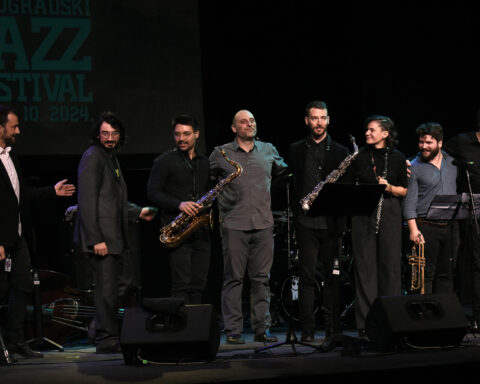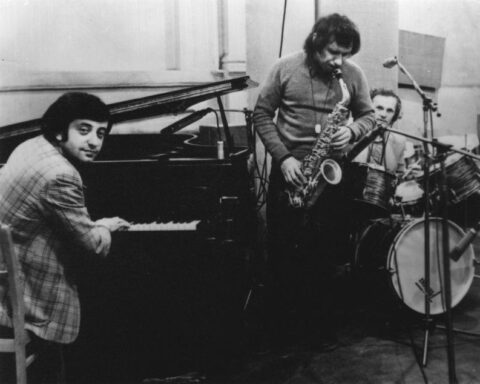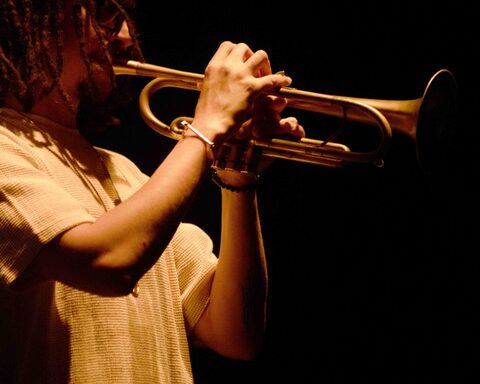Mark Gridley, author of Jazz Styles: History and Analysis, a leading textbook introducing the music to undergraduates for three decades, has called for color action photographs of almost two dozen post-1950 jazz stars for inclusion in an 11th edition forthcoming from Pearson/Prentice -Hall.  Concurrently, Gridley has faced criticism from a veteran JJA photographer for the rights agreement governing compensation of the included photos — an agreement which the Jazz Styles‘ author says he will labor to amend.
Concurrently, Gridley has faced criticism from a veteran JJA photographer for the rights agreement governing compensation of the included photos — an agreement which the Jazz Styles‘ author says he will labor to amend.
“I always bill for ‘one-time non-exclusive use’ of my prints,” writes this West Coast photographer. “I find now that [Gridley] uses and re-uses them in his many publications . . .This is a serious break [in] dealings with the publishers and record companies I have dealt with over 40 to 50 years.”
This photographer concedes, “Unfortunately, I may not have read all the details in whatever agreement.” He has demanded return of his images in all forms, and vows not to work with Gridley again.
Gridley has supplied JJANews with his standard agreement for photographers, which states: ‘I grant Mark C. Gridley and Prentice-Hall, Inc. permission to publish my photo . . . in the Concise Guide to Jazz and Jazz Styles books, including all future printings and editions. My name will appear on a credit line on the same page as the photo whenever it is published with Gridley’s books. I understand that Gridley and Prentice-Hall will not distribute my photo in any way other than on the pages of these books. They will not give the photo to anyone else or grant permission to anyone else to publish the photo. I have been paid for this permission and expect no royalties, residuals, or further payments.”
Gridley reports to JJANews that he hopes to recover rapport with said photographer, “as his photos are essential to the effectiveness of my books, and I will get my publisher to work with him for compensation and future arrangements on an edition-by-edition agreement.” Whether such contractual re-arrangements are available for all contributing photographers is undetermined.
That sai: Gridley’s want-list covers color photo substitutions for black and white photos included in previous editions of Jazz Styles. He requests that “All photos must be crisp, with excellent definition, flattering pose, full instrument visible, not off-stage, not posed, not previously used
for album cover.” Photos should be well-lit, taken in relative closeup, not portraits but rather showing hands on instruments. “Jazz Styles serves as a music appreciation textbook and must therefore supply nonmusician readers with a complete image that shows exactly how the portrayed musician makes a living,” Gridley writes. Permissions to publish in Jazz Styles must include license for use in print media as well as electronic (eBook) media, but do not restrict
photographers from giving permissions to others for similar use.
Considering his own final correction deadline is in early September, submissions as jpegs or pdfs at must be made immediately to mgridley@heidelberg.edu. The musicians he’s looking for are:
1. Steve Coleman
2. Charles Mingus
3. Modern Jazz Quartet
4. Horace Silver (preferably from the 1950s or 60s)
5. Clifford Brown
6. Joe Henderson
7. John Coltrane
8. Lee Konitz (’50s only)
9. Gerry Mulligan (’50s only)
10. Duke Ellington
11. Count Basie
12. Cootie Williams
13. Weather Report
14. Miles’ Electric Band (’70s preferred, ’80s acceptable)
15. Jaco Pastorius
16. Sun Ra
17. Albert Ayler
18. Ornette Coleman
19. Dave Douglas
20. Carla Bley (’70s or ’80s preferred)
21. Scott LaFaro
22. Larry Coryell (’60s or ’70s preferred)
23. Freddie Hubbard (’60s preferred)
Candidates can be sent to Mark Gridley as jpegs or pdfs at
mgridley@heidelberg.edu.





